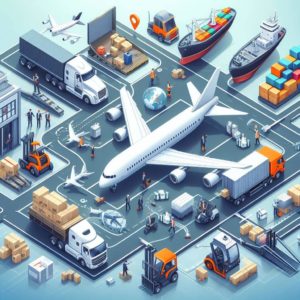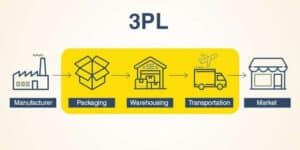[vc_row][vc_column][vc_custom_heading text=”Supply Chain backlog in Canada”][/vc_column][/vc_row][vc_row][vc_column][vc_column_text]The complex situation of supply chain disorder which Canada is facing in the present-day was in point of fact started in the beginning of 2020, when COVID first hit the world and the economies suffered as a result of lockdowns all around the world. Though there was an intermittent fluctuation in the economy and supply chain after every new variant’s outbreak. The global supply-chain issues and thrifting demand first came about this time last year but has not yet improved. Debating on the situation in Canada alone, challenges such as unusual consumer demand, downturned manufacturing, port congestion leading to increased freight and shipping costs, and influx in demand for certain products is resulting in empty shelves across the country.[/vc_column_text][/vc_column][/vc_row][vc_row][vc_column][vc_single_image image=”2924″ img_size=”full”][/vc_column][/vc_row][vc_row][vc_column][vc_column_text]
Import efflux exacerbating Canada’s supply chain
The demand for exports has massively increased than exports in Canada, causing hundreds of empty shipping containers stacked in Vancouver’s port. This backlog is hurting the truckers, the drayage service providers, and much longer waits for deliveries with higher prices for consumers.
The consumer change trend accompanying COVID-19 is noticed all around the world and is apparent in Canada as well. With the lockdown and traveling limitations, people are investing more in appliances, furniture, sports gear, and household stuff. This requires in-land consumer electronics manufacturing and direct imports too. On a par, it can be said that the current disruption of the supply chain is a symptom of the growing problem as more manufacturing has moved overseas. The outsourcing of products to take advantage of the cheapest labor has proved to be baneful for many businesses in current circumstances. The health protocols being followed worldwide in the past 2 years have caused factory shutdowns and labor shortages in the manufacturing and transportation industry. Most of the goods mentioned are manufactured in Asia, and the surge in their imports has gone beyond the capacity of ports to process the incoming container traffic.
Whirlpool Corporation, the world’s largest manufacturer of major appliances, said it’s working hard to overcome these challenges to continue to meet consumer demands.
This in return is creating unfortunate consequences for the trucking companies and warehouses as they are struggling to manage the influx of container shipments and managing the shortage of labor of their own transportation system. The situation started worsening with the flooding in British Columbia which cut off the Vancouver port from the rest of the country. Ever since the country is not being able to get over these bottleneck crises at the ports. Though there have been many statements from the officials that things will start catching up again sometime in 2022 in some industries, a smooth run in the supply chain is not expected any time soon.
This video report by CBC News demonstrates the difficulties faced by yard owners and transportation companies amid the escalating imports and congested ports.
WATCH | A surge in imports is straining Canada’s supply chain:
https://www.youtube.com/watch?v=r-Fd0MuSViI
Mandatory vaccines for truckers across the borders
The pre lingering state of Canada’s supply chain issues has been heightened by the federal government’s vaccination mandate for truckers which came into effect on January 15th. A week later the Neighboring border country introduced their own mandate for truckers crossing into the US. The officials insist that the biggest threat to Canada’s supply chain is COVID and the best tool against it is Vaccines. However, this trucker vaccine mandate has compounded the issue and supply shortages of certain products have been reported in the country. Thousands of unvaccinated truckers were forced off the roads, embarking the conservatives to draw attention towards food insecurity. The officials consider the empty shelves as overhyped and are convicted that Canada’s food supply will not suffer complete shortage, there may be temporary unavailability of certain food items though. Despite their statements regarding food scarcity, they are in favor of the government reconsidering the vaccine mandate policy, as they believe truckers driving alone cannot be the primary reason for the spread of Omicron.
As a matter of fact, Canada’s 70% of the food imports coming from the US are moved on wheels across the border. Before this vaccine mandate, Canada was previously experiencing a shortage of 20,000 truck drivers, and according to the Canadian Trucking Alliance (CTA), the estimates of Canadian and American cross-border truck drivers who are most likely to be taken off the road are 32,000. The verifiable aftermath of this mandate on groceries is yet to be seen.[/vc_column_text][/vc_column][/vc_row]







